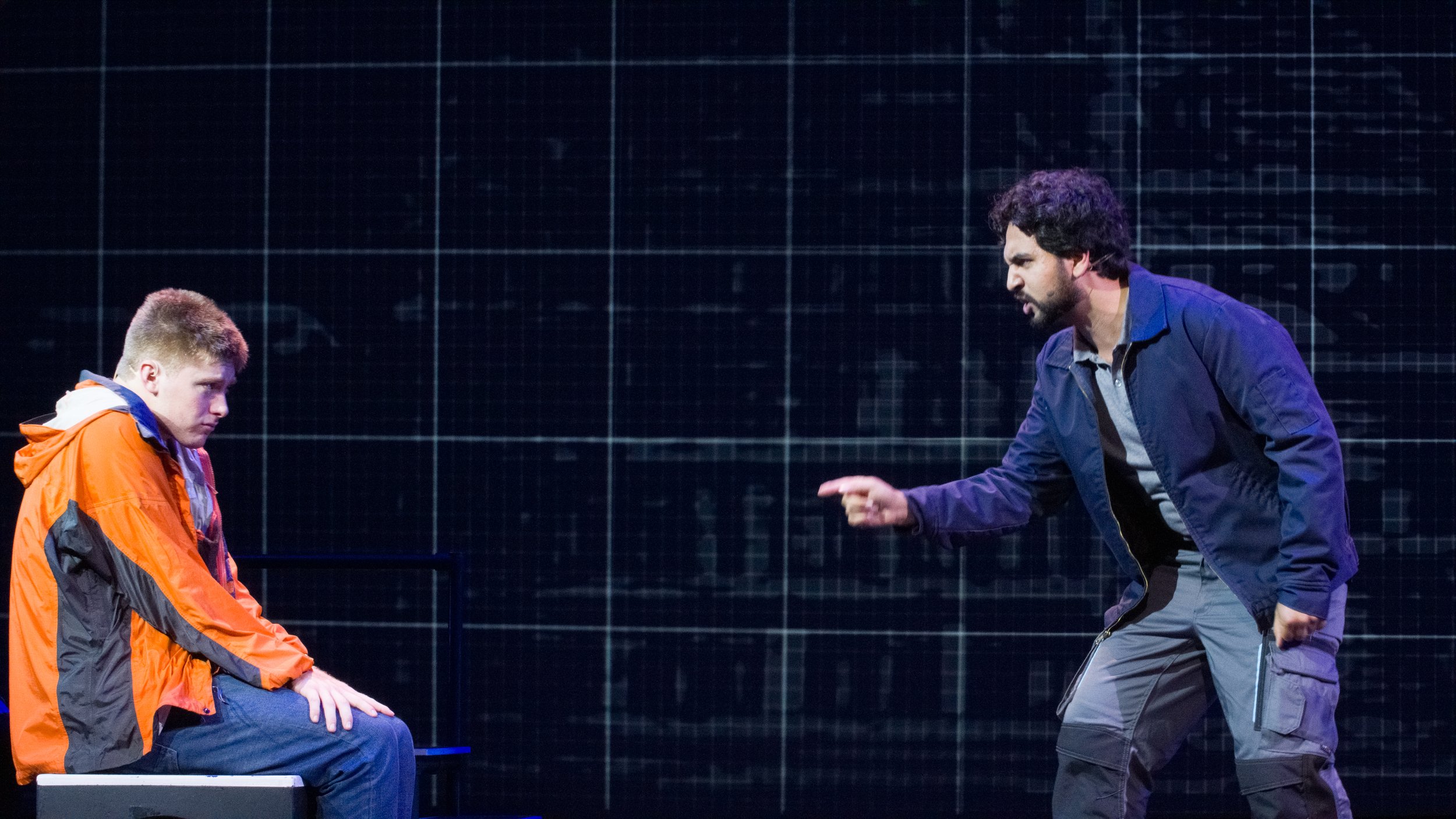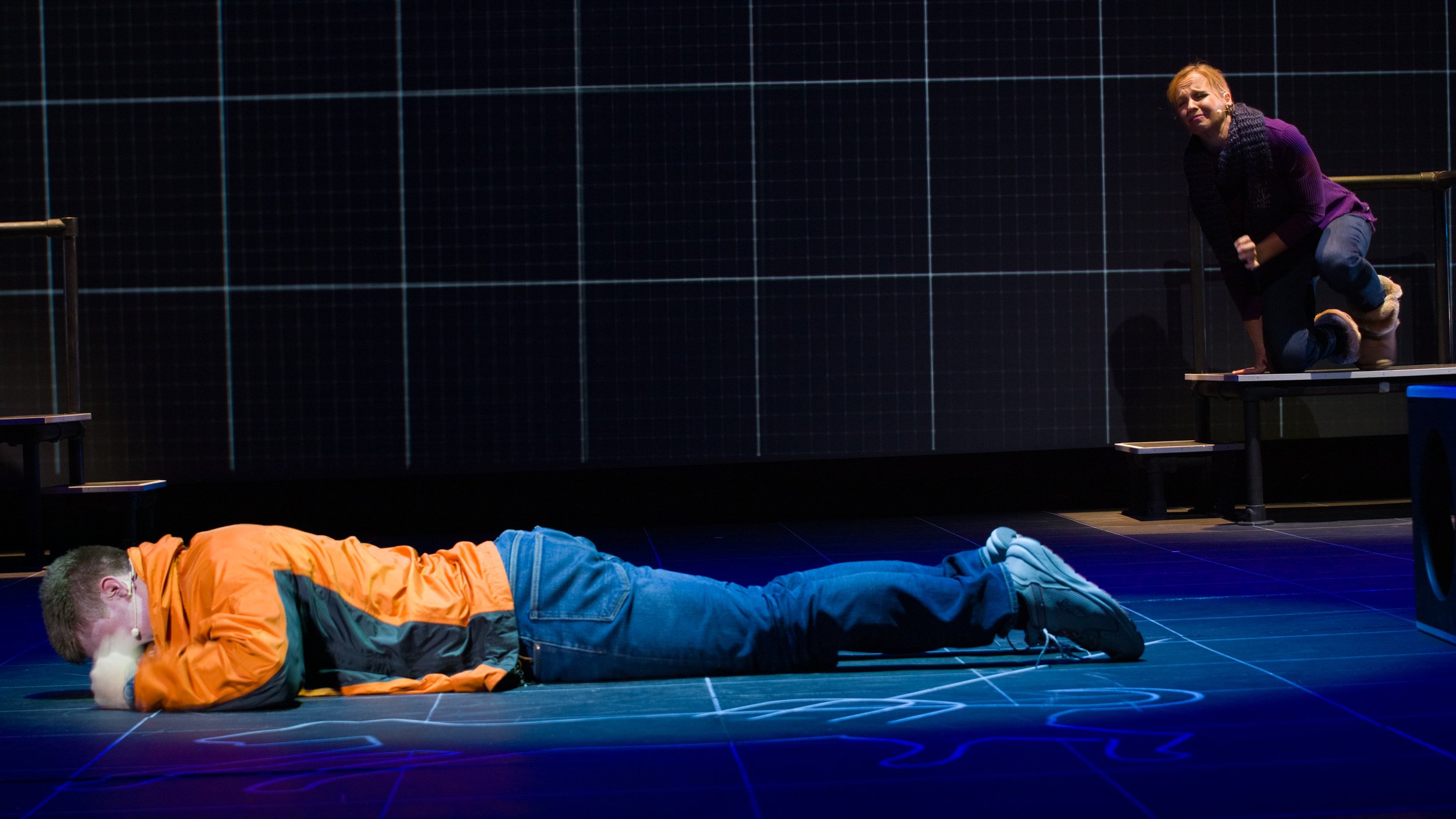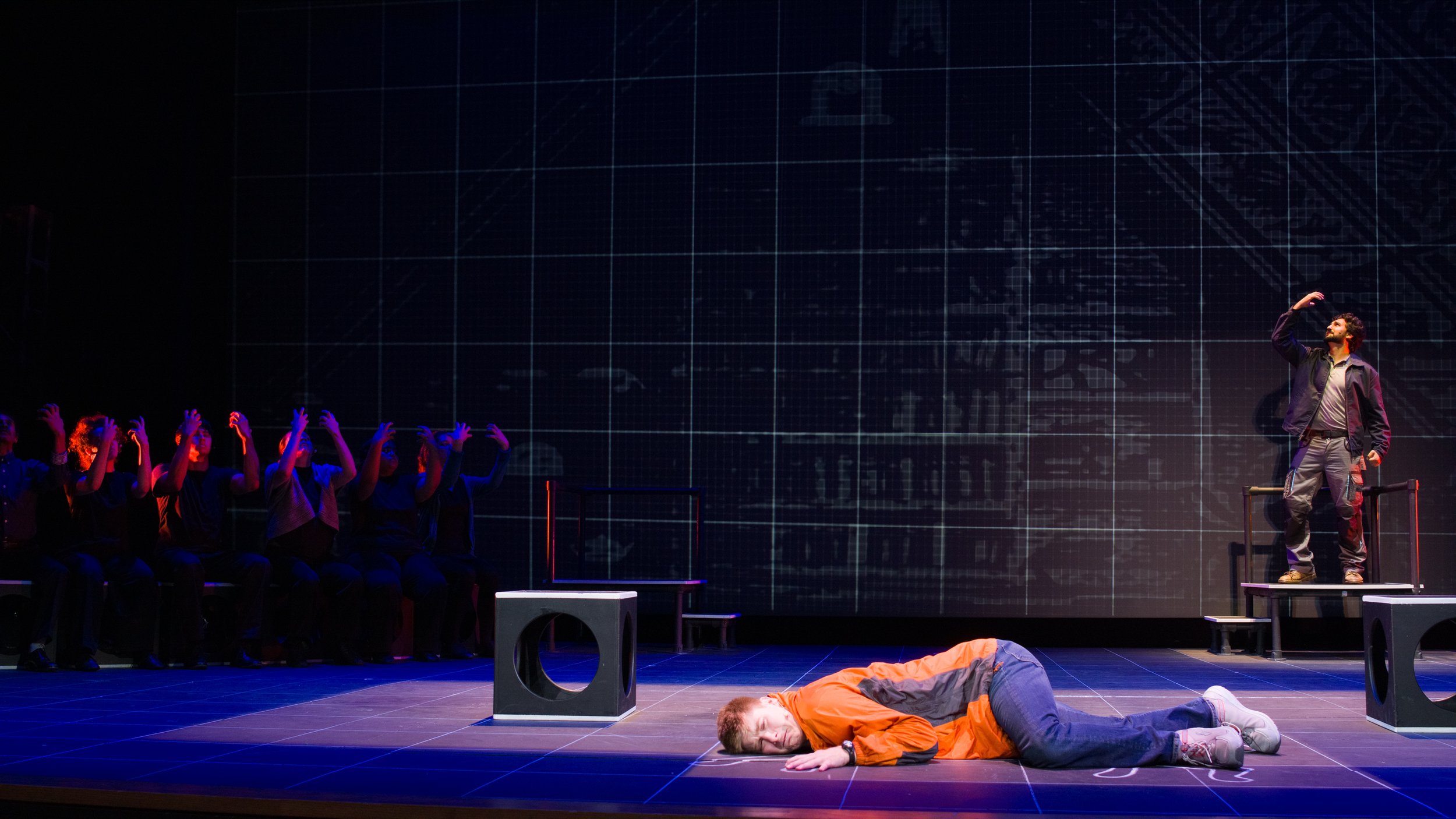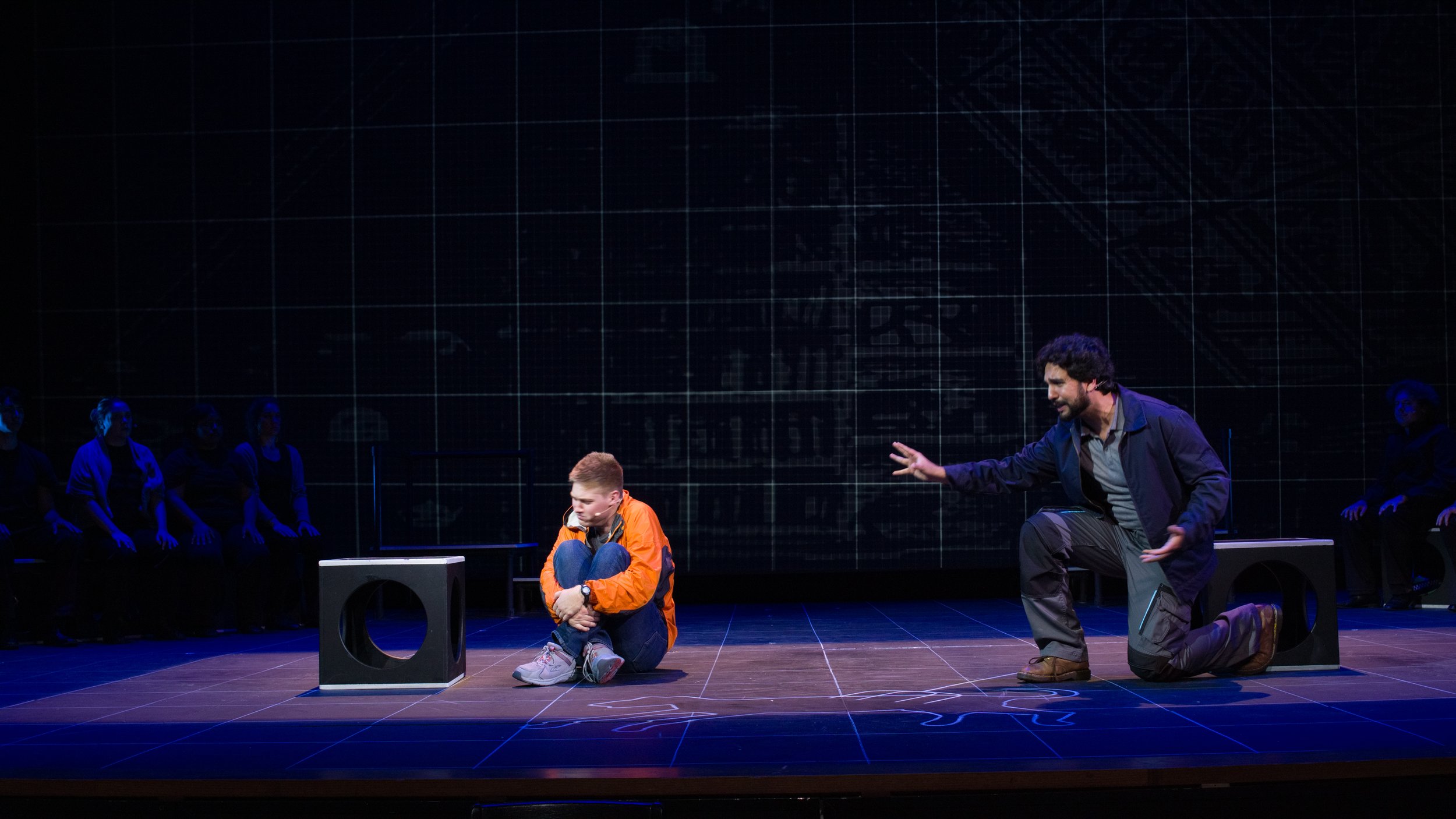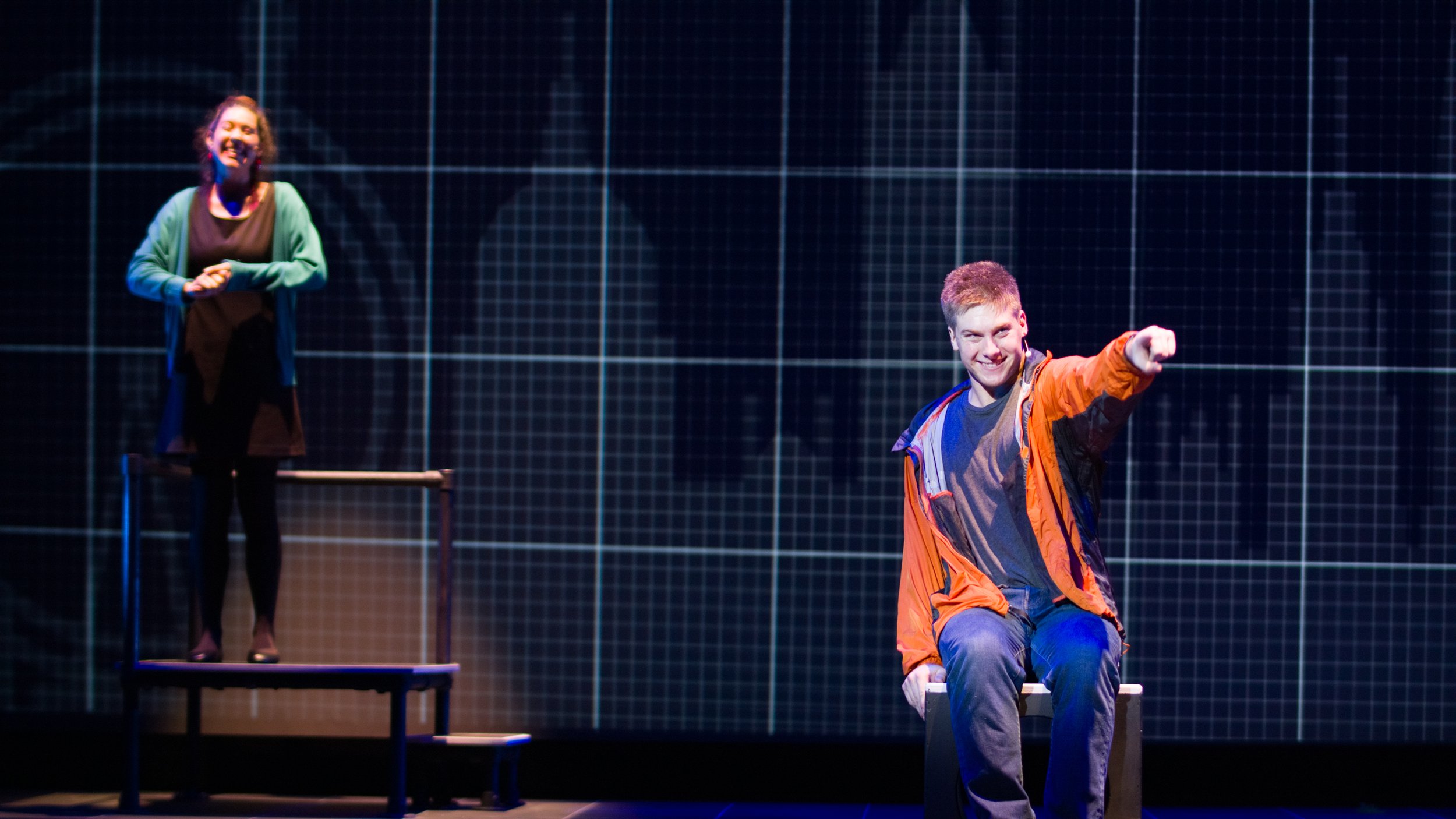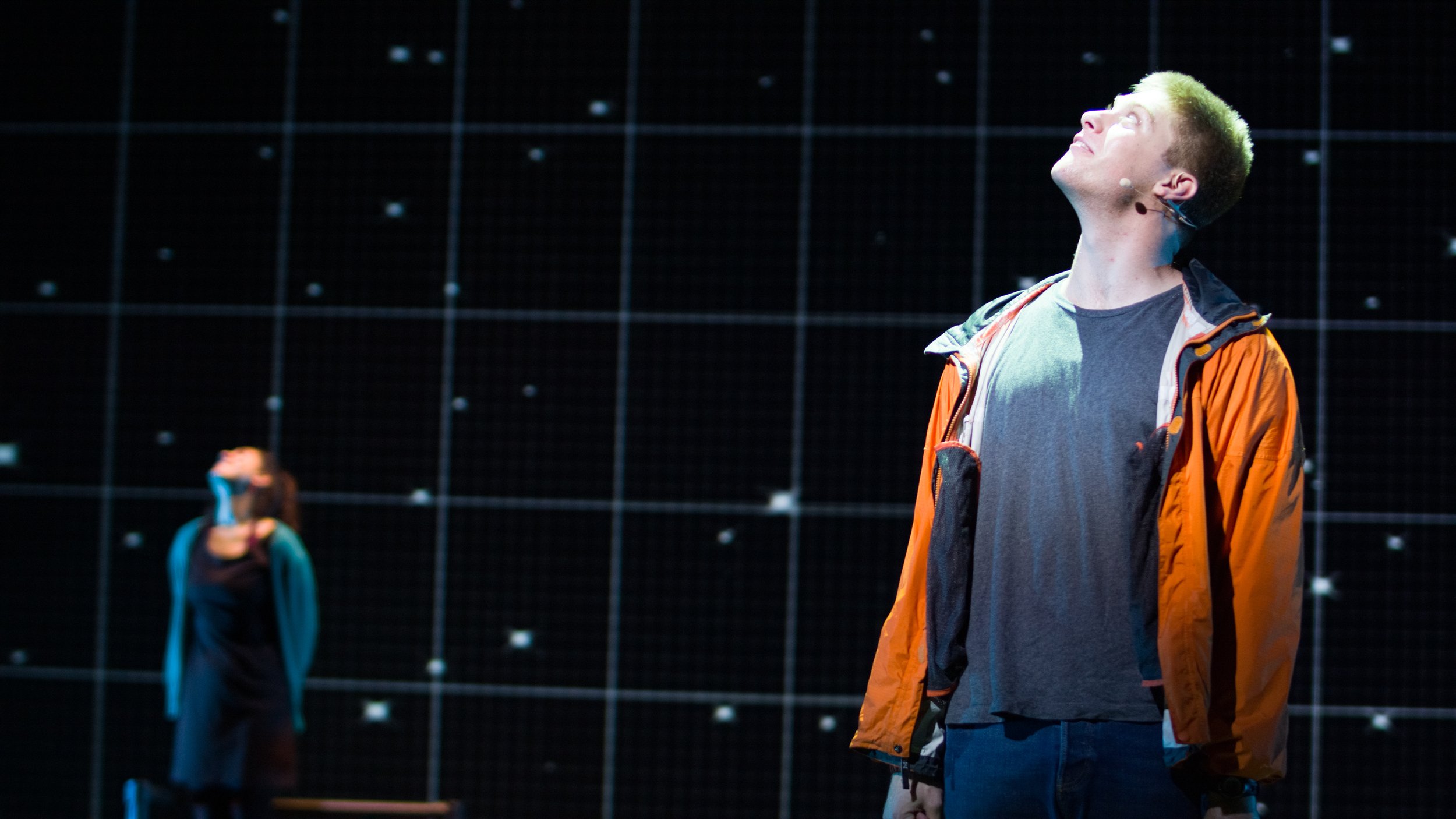The Curious Incident of the Fall Play
The SMC Theater department Fall play “The Curious Incident of the Dog in the Night-Time” is an adaptation respectful of its audience.
Filled with intriguing surprises and heartfelt emotion, the SMC Theater department presented this year’s Fall play, “The Curious Incident of the Dog in the Night-Time,” which premiered from Oct. 7 to Oct. 16. The play, directed by Dr. Adrianne Harrop, is based on the popular novel of the same name by Mark Haddon. A faithful adaptation was produced for the entertainment of SMC students and all other audiences.
The play was an adaptation of the book following the brief detective journey of a teenager with autism. After finding the neighbor’s dog murdered, Christopher, played by SMC student Justin Valine, decides to investigate the story of the dog’s death.
The difficult task of respectfully encompassing the theme of autism was supported by the abstract depiction of the show itself, directed and put on in a visually mindful way. The layout and stage decisions of this show especially stood out and played a role in the encompassing of its sensitive topic.
The task of embodying such a condition was shared among many actors, and illustrated through visuals. This allowed for the show itself to revolve around the subject of autism, rather than placing the distinction from the perspective of a neurotypical person. However, this form of presentation had some audience members confused.
“I felt that the play was very heavy on dialogue and at times the narrating was too much,” SMC student Ryan Del Papa said. “This would’ve been fine had the whole play been more fast-paced and had the run time been cut down.”
As someone with an interest towards art and expression, the curiosity arose regarding how the director would portray such a serious topic while avoiding an offensive contour. The abstract use of the stage and dialogues between the characters truly satisfied the recognition of this condition important to so many people.
Although for someone watching this show certain parts may seem confusing or flow slowly, by understanding the storyline or having read the book helps to resonate with the artistic representation of certain scenes. Some scenes made audience members cry, as they were given a chance to empathize with the difficulty and not simply watch it from an entertainment perspective.
“I enjoyed the play, I thought the actor who played the main character really did it respectfully and I never felt uncomfortable about him playing a character of a disability,” student Alessandra Gutierrez said.
The cast of 12 students in the play had been working on the production for months, and its abstract depiction included a constant onstage presence of all the actors. Such is often infrequent, but because most of the actors played several roles, having this stage preference also added to the visual depiction of a busy mind.
The Show’s Pamphlet disclosed information about the performance, clarifying that the play was only the representation of one person on the autism spectrum during a specific time and wasn’t expandable to represent all neurodivergent people. Regardless, the show succeeded in putting on visually intriguing elements with modern lights and projections.
The difficult task of respectfully encompassing the subject of autism was supported by the abstract depiction of the show itself, directed and put on in a visually mindful way.


